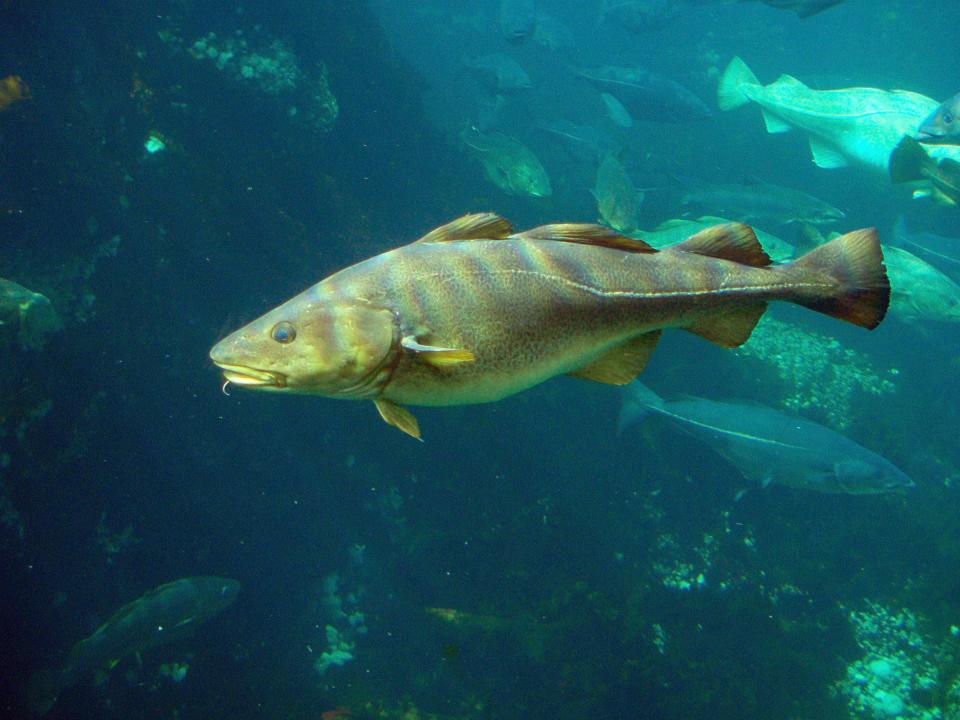Scientists have found a way to predict whether fisheries are vulnerable to climate change

Wikimedia Commons
World fisheries have steadily been declining over the past couple of decades, and the trend is continuing today.
Just this April, the United States banned most Pacific sardine fishing after the fish population declined by 90% over a nine year period.
And now, one of the United State’s fisheries that was once thought to be "indestructible" is in grave danger as well.
New England’s coastal Atlantic cod population used to be able to recover from short-term population drops, but since 2008, the cod fish have been unable to successfully rebound.
Overexploitation by humans is one of the leading causes of the drops in fish populations, according to the National Oceanic and Atmospheric Administration (NOAA). But a new study places at least part of the blame on the North Atlantic Oscillation (NAO) as well.
The NAO is responsible for causing warmer water temperatures in the North Atlantic by creating basin-wide changes in the intensity and location of the North Atlantic jet stream and storm track. It also affects the normal patterns of heat and moisture, affecting temperature and precipitation patterns. This varying phenomenon is the reason for at least 17% of the New England population loss since 1980. The warmer water temperatures cycle hurt the reproductive processes in fish.
But, there is a small silver lining in this scenario. The scientists say that they have found that there is a delay between the NOA and when the fisheries start to become vulnerable. This means that they can use the NOA to predict how large fish populations will be in the future and there, be better prepared to enact fisheries management solutions.
“It would provide us with an early warning before the declines appear,” lead author Kyle Meng said in a press release. “So we now know to expect that 17% drop in adult fish during a positive phase of NAO, which gives management enough time to adjust practices."
The researchers of this study believe that instead of offering doomsday messages to the public about how climate change is ruining the planet, they are using climate change to better predict how we can better take care of these fish.
“Climate change may have costs for fisheries, but you don’t have to make bad choices that accentuate it for decades,” said co-author Steve Gaines.
This method could also be used to start predicting fishery declines in other areas, such as the Pacific.
NOW WATCH: Watch a Boeing 787 perform stunts you’d only expect from a fighter jet
See Also:

 Yahoo Finance
Yahoo Finance 
